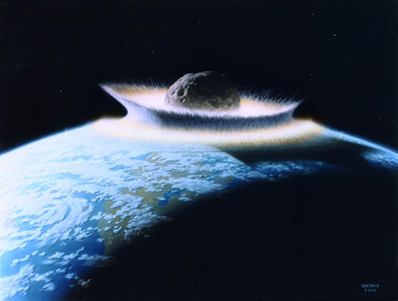|

Top Stories

|

|
 |
 |



Mystery of millisecond pulsars solved
...Astronomers have watched a pulsar be spun up in real time by its companion star, turning it into an incredibly fast millisecond pulsar rotating a breakneck 592 times per second...
read more
First British astronaut announced by ESA
...For the first time a Briton is officially among the cadre of astronauts after Timothy Peake, a RAF helicopter pilot, was selected by the European Space Agency following the latest round of astronaut recruitment...
read more
Doomed planet may have been drenched in water
...A small exoplanet full of water may have been swallowed up by a dead white dwarf star, according to anomalous readings of hydrogen in the star's helium-rich atmosphere...
read more

|
 |
 |

|
Spaceflight Now +

|

|
 |
 |

Subscribe to Spaceflight Now Plus for access to our extensive video collections!
 How do I sign up? How do I sign up?
 Video archive Video archive

STS-120 day 2 highlights

Flight Day 2 of Discovery's mission focused on heat shield inspections. This movie shows the day's highlights.

 Play Play

STS-120 day 1 highlights

The highlights from shuttle Discovery's launch day are packaged into this movie.

 Play Play

STS-118: Highlights

The STS-118 crew, including Barbara Morgan, narrates its mission highlights film and answers questions in this post-flight presentation.

 Full presentation Full presentation
 Mission film Mission film

STS-120: Rollout to pad

Space shuttle Discovery rolls out of the Vehicle Assembly Building and travels to launch pad 39A for its STS-120 mission.

 Play Play

Dawn leaves Earth

NASA's Dawn space probe launches aboard a Delta 2-Heavy rocket from Cape Canaveral to explore two worlds in the asteroid belt.

 Full coverage Full coverage

Dawn: Launch preview

These briefings preview the launch and science objectives of NASA's Dawn asteroid orbiter.

 Launch | Science Launch | Science

 Become a subscriber Become a subscriber
 More video More video

|
 |
 |

|
|
 |

Did life need asteroid bombardment?
BY KEITH COOPER
ASTRONOMY NOW
Posted: 22 May, 2009
A period 3.9 billion years ago when Earth was peppered with impacts by large asteroids may have created an environment in which primitive life could take hold, rather than destroying that life. This is the bold new claim by astrobiologists at the University of Colorado at Boulder, USA.

Wham! Did life get a helping hand by asteroids crashing into Earth?
Image: Don Davis/NASA.
What we know today as the Late Heavy Bombardment (LHB) hit all the inner planets around 700 million years after the Solar System formed. The Moon and Mercury still bear the scars from this frightful time when fire and rock rained down from the heavens on a regular basis. Nobody is sure what caused the LHB, but the outward migration of the giant planets such as Jupiter and Saturn may have been enough to disturb the orbits of various comets and asteroids, slinging them in our direction.
Regardless of the cause, it had been thought that the LHB had sterilised Earth’s surface. The astrobiologists, Oleg Abramov and Stephen Mojzsis, accept that microbial life on the surface may have been forced from the surface by the repeated bombardment, which lasted up to 200 million years. However, their simulations of the Earth’s crust show that the pressure of the impacts will have created a vast network of cracks and hydrothermal vents underneath the ground, the perfect habitats for simple microbial life to hide in. Even if life was not yet present, these cracks and vents will have become home to the first life forms at some point.
“Even under the most extreme conditions we imposed on our model, the bombardment could not have sterilised Earth completely,” says Abramov. “Our results are in line with the scientific consensus that hyperthermophilic, or ‘heat-loving’, microbes could have been the earliest life forms on Earth, or survivors from an even more ancient biosphere.”
Abramov and Mojzsis’ research is published in the 21 May issue of the journal Nature.
|
 |
 |
 |
|
|



